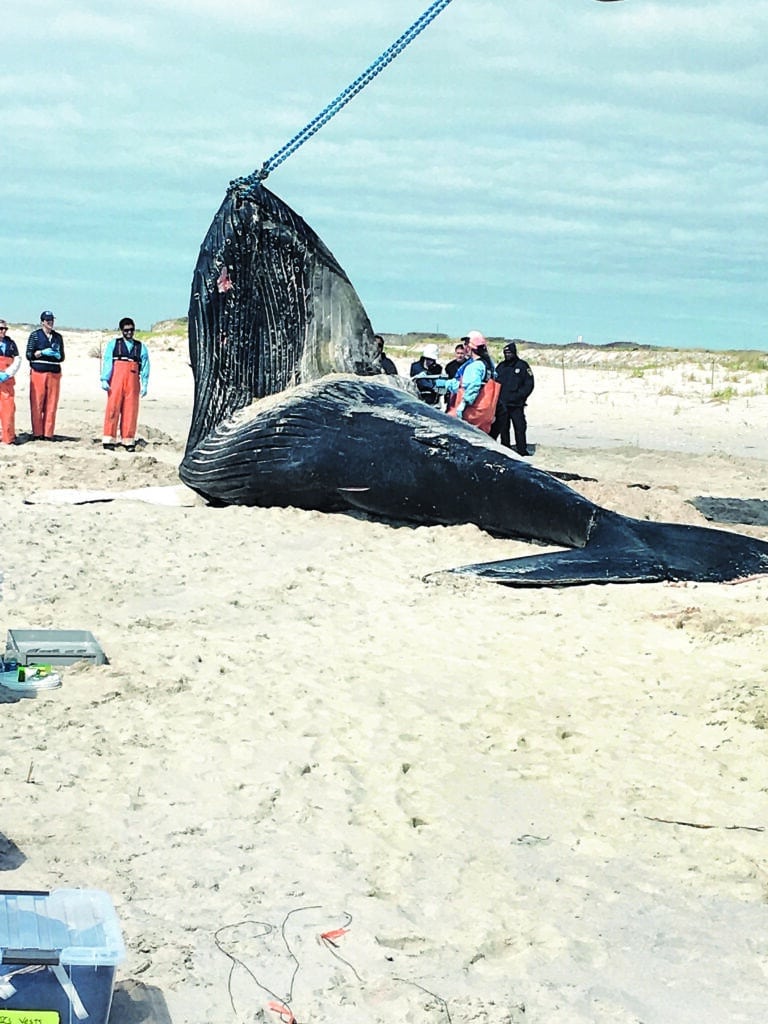One of the best things about living on Long Island is access to the water. The local beaches are among the best in the country and the surrounding waters offer exceptional fishing. It may come as a surprise, but there are also a number of marine mammals who frequent the area, also called the New York bight.

Many people think of whales and other cetaceans as great beasts of the deep, plumbing the ocean far off shore. However, the reality is that humans share the New York bight with many of these species year round.
One of the premier organizations studying marine mammals in the area is the Coastal Research and Education Society of Long Island, or CRESLI. Dr. Arthur Kopelman, president of CRESLI, has been educating the public on marine mammals since the organization’s founding. Kopelman is a marine mammal biologist. He was a SUNY Distinguished Service Professor from 1981 until 2020.
“So (CRESLI has) been around as an organization since 1996. Our mission is to promote and foster understanding and stewardship of coastal ecosystems for research and education. where we do that is essentially take people out on whale watching trips, in the summer, take them out on to cruises and seal walks throughout the autumn, winter and spring to educate folks. We also use those as platforms of opportunity to collect data on whales, dolphins, porpoises in the summer, or seals in the autumn, winter and spring.” Kopelman said.

A number of species have been confirmed in the area over the years, both close to shore and farther out. Some are regulars and some have wandered outside what would be considered their normal space. “We get a variety of whale and dolphin species here. We have finback whale, humpback whale, sei whale, minke whale. I’ve not seen them in many years, but we have blue whales further offshore. We have sperm whales, North Atlantic right whales. we also encounter inshore bottlenose dolphins and then a bit further out we get the offshore bottlenose dolphins, short-beaked common dolphins and occasionally Atlantic white sided dolphins.” Kopelman said. “I’ve been monitoring seals at Cupsogue beach in Moriches Bay for 18 years. I’ve got over 31,000 seal encounters there. 99.5% are harbor seals and the rest are grey seals and occasionally a harp seal or a hooded seal. Occasionally a manatee comes up and visits, but it hasn’t happened in a while. And then occasionally the ones that haven’t read the textbooks, like beluga whales, show up.”
Whales are monitored using satellites, tags, notes and observation. These observations are shared with others working in the New York bight in the Gulf of Maine. Observers will photograph for ID purposes and then crosscheck with other catalogs in other regions. A variety of AI systems are also available online to help ID.
Each species has a set of characteristics to help identify individuals. For finback whales, it is the shape of the dorsal fin, patterns on the right and left sides of their heads, as well as scars. Higher resolution cameras allow scientists to key in very closely on scars. Humpback whales are traditionally identified by the underside of the tail fluke and the dorsal fin.
Whales have been washing up on local beaches with an alarming regularity. It’s always disturbing to see a huge, majestic animal laid low. Whenever possible, scientists will perform a necropsy to analyze the health of the whale and try to determine a cause of death. Kopelman was not involved in the necropsy of the whale that washed up on Lido beach, but he was familiar with the process. “So since 2016, to date, I think 178 different humpback whales have been found dead along the east coast in the US. In 2016, NOAA Fisheries declared an unusual mortality event and that is declared when the mortality of any particular species or population is greater than what you would expect. And that’s been in place now since 2016. And, unfortunately, not all the animals are in a position or in state to undergo post mortem exams. But those that have, about 40% have died because of either ship strikes or entanglements or a combination thereof.”
There is increasing concern that these whale deaths are the result of activity linked to offshore wind energy projects. Like any new endeavor, it is difficult to determine a direct line of causation until more evidence is available.
“There are lots of marine mammal biologists working diligently to make sure that when offshore wind systems go into place they’re done with the least impact, both in their construction and in their use. The main problem for all of that, for the most part, is noise. And that’s a major issue. The world’s oceans are incredibly noisy and it’s really difficult for things like right whales to even hear each other and that is a critical part of courtship… people these days are saying it’s because of the systems that they’re using, but the kind of acoustic systems that they’re using, at least according to what’s in the federal record, seem to be less intrusive. Not entirely unobtrusive, but less harmful than other times. But you never know until the data is in. Any evidence for any kind of issue that can be from the noise has to be looked at carefully.”
One of the more common causes of whale deaths is ship strikes. There are steps that can be taken to help both whales and cargo shipping coexist more peacefully together. Shipping is at an all time high and shows no signs of decreasing. Whales are also moving closer to shore as one of their key prey species, bunker, become more plentiful. Bunker populations have been recovering since harvesting was banned in 2011. This has led to an increase in impacts in nearshore waters, particularly among juvenile whales. “That’s what’s going on out there. Lots of whales, lots of ships. They’re fast and they’re not looking out. And it’s been a problem that we’re all trying to address, hopefully, by slowing down the speed of all vessels to make it a bit safer when whales are sighted. Essentially, no matter doesn’t have to be 65 feet or longer, just all vessels when right whales are in an area (slow) to 10 knots. That would work really well to help reduce the injuries and risk for the (other) whales as well… slowing down will make a tremendous difference.”
Besides ship strikes, the other most common cause for whale deaths is entanglements. They swim into fishing gear, become entangled, and exhaust themselves swimming or cannot reach the surface to breathe. Kopelman did offer some hope on this front as well. “The other thing is to mitigate entanglements, there’s new stuff being done. Lobster traps, for instance, are on-demand gear, so that the traps are on the bottom without the vertical ropes and they can be recalled through digital connection to get them to release.”































